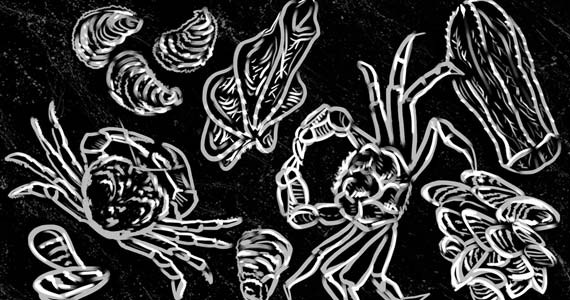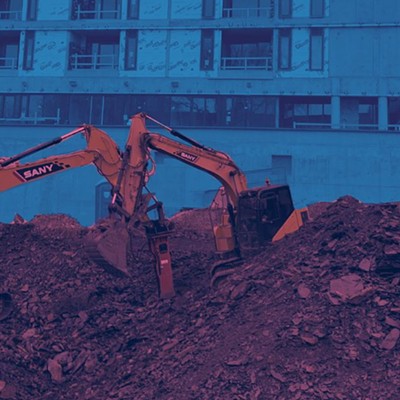Every day millions of massive ships move trillions of tonnes of seawater around the world's oceans as ballast. Without it, any ship without full cargo could easily topple. The problem with this is, anything that survives in the water is discharged far from home.
As a result, "We've got comb jellies in the Black Sea, green crabs [in Nova Scotia], zebra mussels in the Great Lakes, Chinese mitten crabs; the MSX oyster disease in Cape Breton has been blamed on ballast water; they've all drastically changed ecosystems," says John Batt, who has the supercool job title of Aquatron manager.
The United Nations International Maritime Organization has identified invasive aquatic species as one of the four greatest threats to the ocean, with severe environmental, economic and public health implications. Ballast water is often to blame. Nova Scotia's invasives tend to work their way up the coast from New England's and New York's major shipping ports after being dumped from ships.
"Perhaps the most serious [immediate ocean threat] is ballast water because the damage is irreversible," Batt says. "Introduced organisms compete with natural organisms and you can't get rid of them once they are established."
Enter Aquatron. Sounds like a superhero, but it's a Dalhousie University lab equipped with four big pools---capable of pumping 1,250 cubic metres an hour, five times the rate of other test facilities.
Batt's team uses them to test ballast water filtration devices, the second most expensive part---after the engines---of large ships. They are designed to kill organisms in ballast water before it gets dumped into a new ecosystem. By 2016, every filtration system must meet new standards of safety and effectiveness from the IMO or US.
The safety part is easily done, but measuring microscopic and near-microscopic organisms, and deciding which would be viable in a new environment, is challenging terrain that science is still traversing. Aquatron provides a world-class facility that localizes and enhances the industry's capacity to meet the challenge.
Currently, companies in the Canadian shipping industry have ballast filtration systems tested in California or Europe, a process that imposes enormous expense and logistical challenges. And there is a bottleneck---many filtration systems and too few testing facilities, most of which are outdoors and can only operate in fair weather.
"We saw the opportunity to expand our existing water testing facilities and beef up Dalhousie's oceans capabilities," Batt says. Intense industry interest allowed the construction of the four new tanks without government funding. "We will take clients' filtration systems, plug them into our system and test their performance. It's another way to keep the tanks going and keep them from being overly expensive."
The Aquatron is an obvious boon for Dal's reputation as a marine sciences institution, but it is also part of an international change that gives hope of significantly reducing invasive species catastrophes.
Currently, many of the ballast filtration systems don't work, Batt says. "Others work well for certain organisms and not for others."
Aquatron will give filtration manufacturers a necessary means of determining what survives treatment, what doesn't, and which technologies work best. It is also the only such facility in North America that can operate in saltwater and freshwater---essential for companies working in the Great Lakes or Europe.
If a technology passes the tests the company can apply for certification. Otherwise, it must troubleshoot.
Dalhousie can help with that too. The Aquatron team is helping its first official client, Trojan Technologies---an Ontario-based company specializing in municipal drinking water---adapt its technology for a new use.
"We have all these professors---from engineering, medicine, algal experts, oceanographers---available to work on issues," Batt says. By tapping into that multidisciplinary expert pool, Dal hopes to mix theoretical and applied science in one facility.
One of Aquatron's tanks is underground and can be sealed to study the interaction between air and water.
"Something we know little about," Batt says, yet has significant impacts on climate and environment. "Nova Scotia has a huge relationship with the ocean, it's an obvious area for us to be world leaders."












